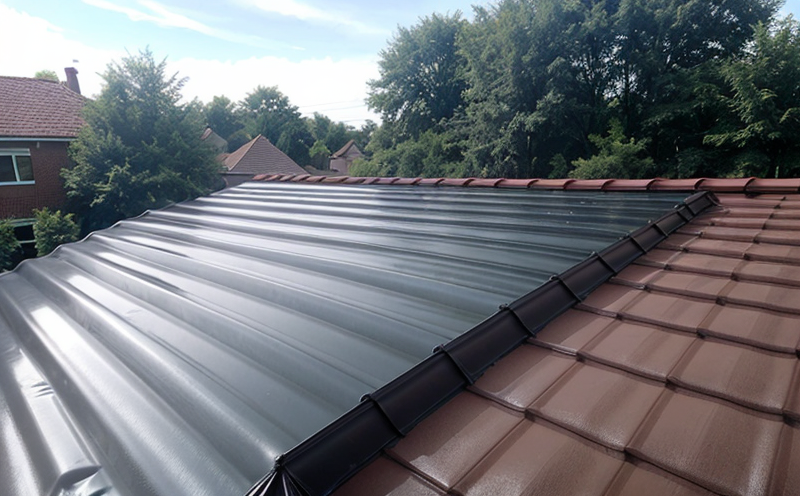EN 13501 Roof Fire Classification Testing
The EN 13501 series of standards is a set of European norms designed to assess fire performance in building materials and products. Within this framework, EN 13501-1:2016 provides the general requirements for the classification of construction products with respect to their burning behavior.
A critical component of this series is EN 13501-2:2018, which specifies the method for determining the fire resistance properties of roofs and roof elements. This standard focuses specifically on ensuring that roofing materials and systems contribute positively to fire safety within buildings.
The testing procedure outlined in EN 13501-2 involves subjecting a representative sample of the roof construction or material to standardized fire exposure conditions. The primary objective is to evaluate whether the tested specimen meets the specified fire classification criteria, thereby demonstrating its suitability for use in accordance with national and international standards.
The test setup typically includes a furnace where the specimen is exposed to an artificial flame source under controlled conditions. This allows researchers to measure various parameters such as heat release rate, smoke production, and flaming duration. These measurements are crucial in determining the fire performance of the roofing material or system.
It’s important to note that EN 13501-2 does not only assess the intrinsic properties of a single material but also considers how different components interact within the overall roof assembly. This holistic approach ensures that even when individual materials may have acceptable fire performance, their combined effect on the entire roofing system is evaluated.
The classification outcomes from this testing are categorized into Class A1 to B2 based on the degree of protection against fire spread and structural integrity retention during a fire exposure event. Compliance with these classes indicates compliance with specific requirements set forth by EN 13501-2, which helps in ensuring that buildings meet essential safety standards.
Understanding the implications of these classifications is vital for architects, engineers, and project managers who must select appropriate materials to ensure fire safety during construction. Properly classified roofing systems not only enhance occupant safety but also contribute positively towards achieving broader fire protection goals within building structures.
Eurolab Advantages
At Eurolab, our commitment to excellence extends beyond just providing accurate testing services; we offer comprehensive support tailored specifically for clients operating within the building & infrastructure sector. Our state-of-the-art facilities equipped with cutting-edge technology ensure precise and reliable results every time.
We employ highly qualified professionals who have extensive experience in performing various types of construction material tests including those required by EN 13501-2. With our expertise, we can guide you through the entire process—from initial consultation to final report delivery—ensuring that all aspects of your project comply with relevant regulations.
Our dedication to quality does not stop there; we also prioritize sustainability and environmental impact throughout our operations. By choosing Eurolab for your EN 13501-2 roof fire classification testing needs, you can trust that you’re receiving top-notch service backed by years of industry knowledge.
Quality and Reliability Assurance
To maintain the highest level of accuracy and consistency in our testing processes, Eurolab adheres strictly to international standards such as ISO 17025:2017. This certification guarantees that all tests conducted at our laboratories meet stringent quality assurance requirements.
Our commitment to excellence is further reflected in our investment in advanced instrumentation and equipment designed specifically for performing EN 13501-2 roof fire classification testing. Regular calibration of these instruments ensures that every measurement taken during a test remains accurate, traceable, and reliable.
In addition to rigorous internal controls, we participate actively in proficiency testing programs organized by recognized organizations like A2LA (American Association for Laboratory Accreditation) and UKAS (United Kingdom Accreditation Service). These external assessments provide further assurance that our laboratory maintains consistent performance across all tests performed here.
International Acceptance and Recognition
- EN 13501 is officially adopted by the European Committee for Standardization (CEN), ensuring its relevance within EU member states.
- The standard has been recognized internationally, with many countries adopting it as part of their national codes.
- It aligns closely with other global standards such as ASTM E1350 and ISO 9772, making it a cornerstone for fire safety in construction worldwide.





